OSCAR-nominated Song of the Sea is one of the most gorgeous animations I have ever seen. It’s a tale of selkies, giants, faeries, owls, witches and a pair of lost siblings trying to get home. That home is a clifftop lighthouse on an island jutting out into a mystical seascape. A blue shimmer, studded with rocks, populated with seals. Clare Island, I gasped in the front row, I’ve been there.
Kittiwake, fulmar and guillemot wheeled in the pristine air
The Wild Atlantic Way led me to it. It’s a brilliant marketing ploy, 2,500km of coastline down the West of Ireland promoted as the stuff of legend. Which it is in so many ways. From Malin Head at the rocky northern tip of Donegal to gourmet honeypot Kinsale in the soft lushness of southern Cork it weaves its magic, whether you walk or cycle along many designated stretches or step on the gas for the long haul with an appropriate soundtrack on the hire car stereo.
We favoured Clare fiddle genius Martin Hayes or the Celtic blues pyrotechnics of Rory Gallagher.... and it seemed wrong not to pull into Westport, County Mayo, without a CD tootle from Chieftains flautist Matt Molloy, who runs a terrific, unspoilt music pub on Bridge Street. (The Guinness is great here, but they also stock local craft beers – try the Mescan Westporter Stout, brewed by two vets)
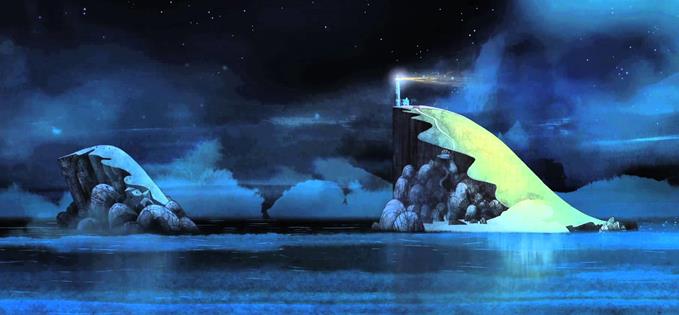 Song of the Sea; below, lookalike Clare Island Lighthouse after dark
Song of the Sea; below, lookalike Clare Island Lighthouse after dark
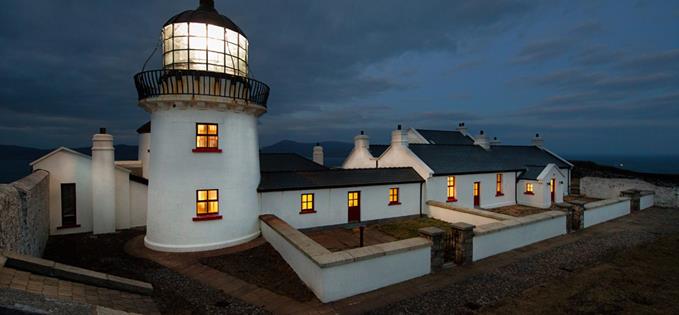
Clare Island, which bore such a striking resemblance to the Song of the Sea setting, has its own anthem, The Saw Doctors’ sentimental Green and Red of Mayo, written 25 years ago as the band returned from a festival on the island. The song also namechecks the holy peak and pilgrimage site of Croagh Patrick which rears up sternly on the Mayo mainland). We once clambered up the killing scree to the 2,500ft summit, which pilgrims attempt barefoot or even on their knees in honour of St Patrick, who fasted up there for 40 days. The views are terrific and worth the arduous two hour trek.
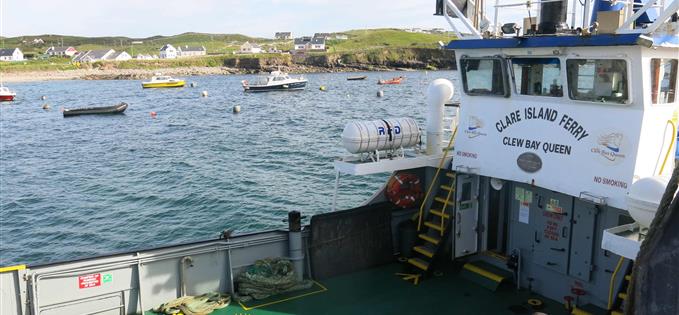 Clare Island Ferry
Clare Island FerryFor the 25-minute crossing from Roonagh Quay to Clare Island perhaps the Saw Doctors took the same ferry as us, run by the O’Grady family,. They certainly couldn’t have stayed at our remote luxury bolthole, Clare Island Lighthouse, which had already been out of beacon service for 30 years. Only restored and opened for guests in 2013, it was one of three three characterful lodgings we stayed at along the Way – all signed up to the admirable Ireland’s Blue Book collection.
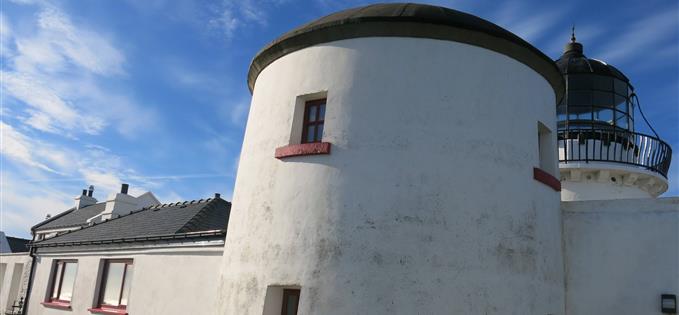 Close up the Clare Island Lighthoue is Santorini like
Close up the Clare Island Lighthoue is Santorini like
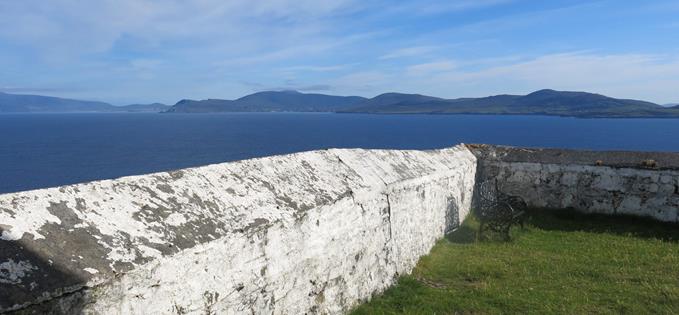 Breathtaking from our terrace , above and below, in different directions
Breathtaking from our terrace , above and below, in different directions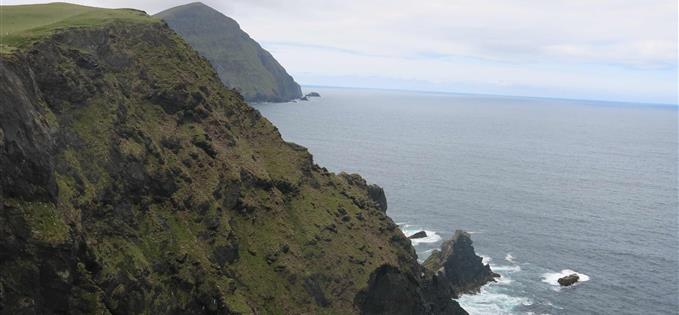
Coming into dock at Clare island, the first thing you notice is a rather compact castle. The woman who built it was rather more expansive. In the 16th century legendary Pirate Queen Grace O’Malley (Granuaile) commanded a string of castles, 20 ships and hundreds of loyal clan followers. At 56, she was finally captured by the English invaders she had given such a hard time. Escaping death narrowly, she famously set sail for England in 1593 to (barefoot) meet and convince Elizabeth I to free her family and restore much of her lands and influence.
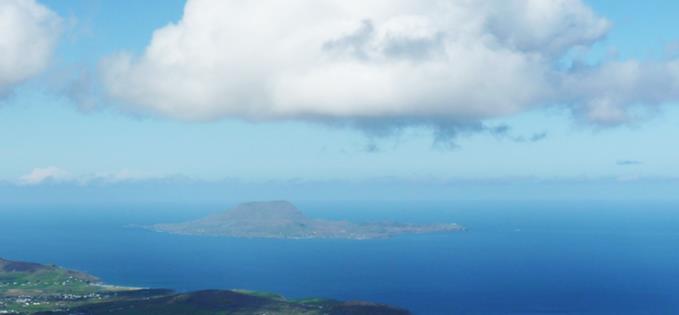 Clare Island from Croagh Patrick
Clare Island from Croagh PatrickA key part of those lands was Clare Island, today much reduced with a population of under 200 across its 15 square miles (it’s the largest of 365 islands in Clew Bay). Still, remarkably untouristy, it’s a fascinating place to wander round. Experts have pinned it down as a geological and botanical phenomenon – a kind of entire Ireland in microcosm. We circled the commanding hump of 1,500ft Knockmore, visited Cistercian Clare Abbey with traces of decorative motifs – dragons, monsters spitting fire, rabbits, harpers – which recall the Book of Kells and drank Guinness at the Sailor’s Bar with its panoramic terrace.
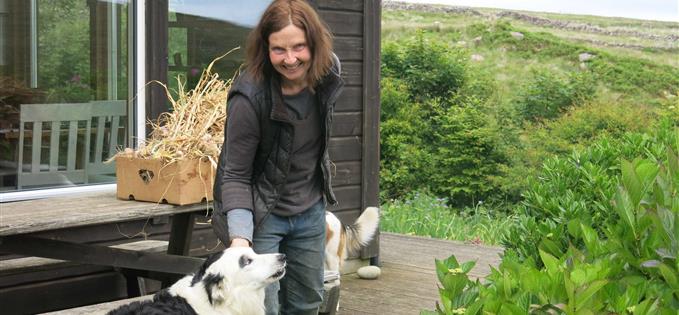 Ciara at Macarra Farm
Ciara at Macarra FarmThe plan was to finish at the Ballytoughey Loom, base for acclaimed weaver Beth Moran, but we got sidetracked at the neighbouring Macalla Farm, where American Ciara and French partner Christophe run yoga, mindfulness, organic food and horsemanship courses in their timber-framed retreat – like a little piece of California on the Celtic Fringe. We nibbled kimchi and fabulous sourdough in their open kitchen before haring up the hill to the Lighthouse for a communal dinner with our fellow guests.
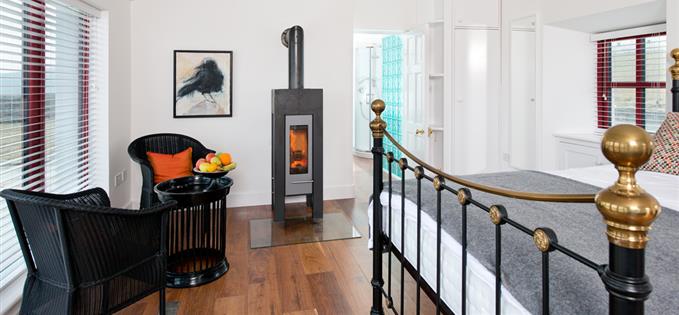 Sauna suite at Clare Island; below, Cliff Corner, where we stayed
Sauna suite at Clare Island; below, Cliff Corner, where we stayed 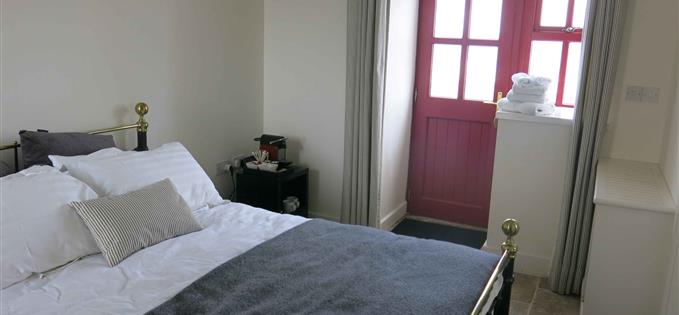 Simple luxury – Cliff Corner
Simple luxury – Cliff CornerThe Lighthouse conversion is also the work of incomers – in this case, Hamburg native Goesta Fischer, his wife and business partner. The boutique guesthouse has just six rooms converted from different lighthouse buildings with a central kitchen, dining room and lounge. Our room, Cliff Corner, discreetly luxurious, wasn’t the most spectacular in itself but step out onto the terrace and the stupendous cliff views below took your breath away. I woke at dawn, despite the six course dinner with lots of interesting German pinot noir, to watch a small fishing boat skirting the inlets way down below, while kittiwake, fulmar and guillemot wheeled in the pristine air.
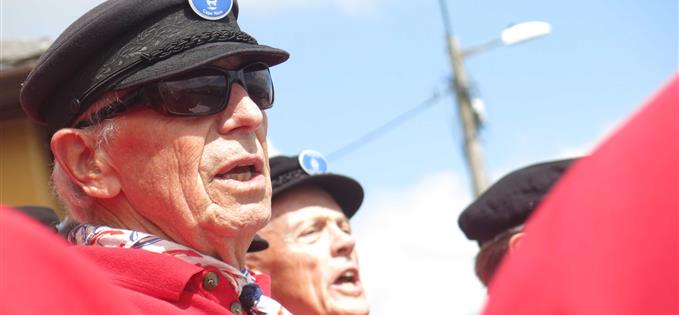
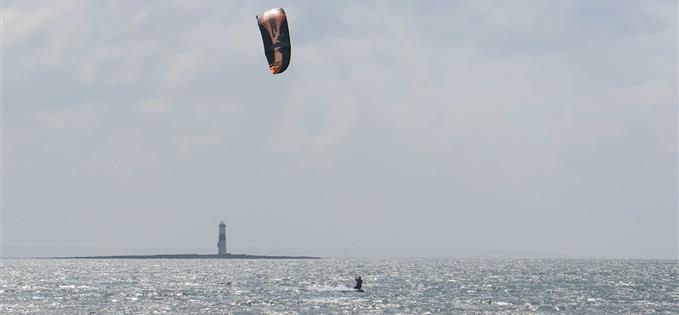 Windsurfer, Rosses Point; above the Norwegian shantymen in full spate
Windsurfer, Rosses Point; above the Norwegian shantymen in full spateThis may have been the most spectacular moment, but the whole trip offered constant delights. Take Sligo, our starting point. We’d been there to celebrate the 150th anniversary of WB Yeats. We’d been dutiful in visiting the poet's sacred spots – his grave at Drumcliffe, the Lake Isle of Innisfree, Lissadell House – so how did we end up at a sea shanty festival in Rosses Point being serenaded by by a troupe of 80 something Norwegians? I trust their spirited ‘What shall we do with the drunken sailor?’ was tongue in cheek. Afterwards we hornpiped on the glorious strand, one of Ireland’s finest.
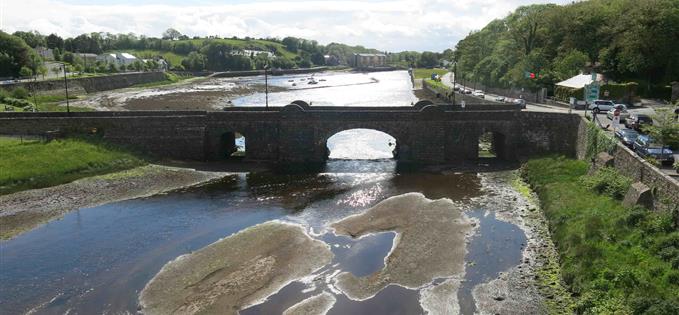 Tidal fishing river at Newport; below, gloriously traditional Newport House
Tidal fishing river at Newport; below, gloriously traditional Newport House
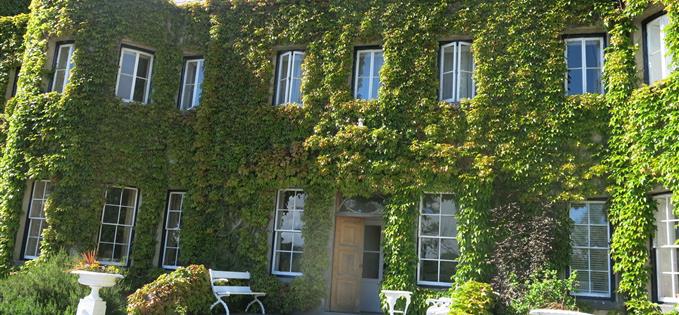 Newport House; below its equally impressive interior
Newport House; below its equally impressive interiorOur next port of call was inland at Newport, which sounds like it shouldn’t be. The tidy little town has its own harbour on the tidal Newport River, which spills out into mighty Clew Bay. This is outstanding fishing country – sea angling in the bay and freshwater all the way upriver to Lough Beltra. The evidence was clear to see in the trophy cabinets in Newport House, which has its own salmon fishing rights.
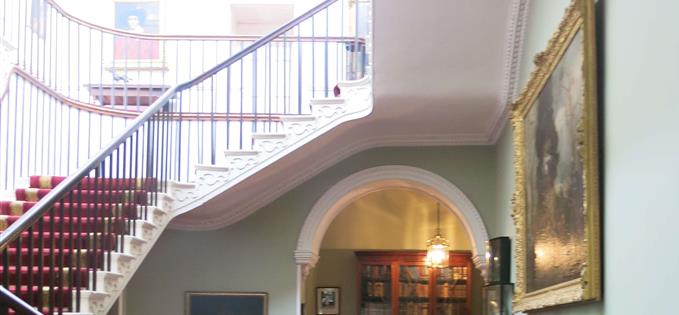
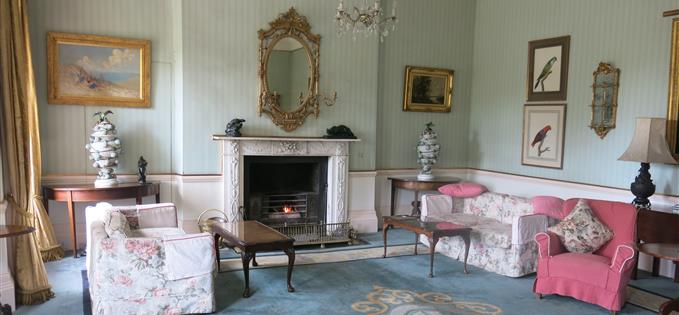
This creeper-clad Georgian mansion was for two centuries ancestral home of the O’Donnells. Today it’s a wonderfully warm and charming hotel under the stewardship of Kieran Thompson. I accidentally smashed a sash window in our our poster bedroom within minutes of arriving and it was all managed with the minimum of fuss. We were ushered into their cosy back bar ("You‘ll be wanting something a little stronger to calm your nerves – so relieved nobody was hurt”), while a glazier was rung and a new room was found. We were hooked!.
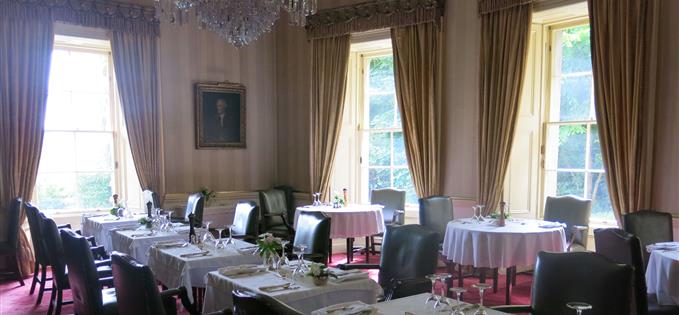 Exquisite dining room at Newport House
Exquisite dining room at Newport House
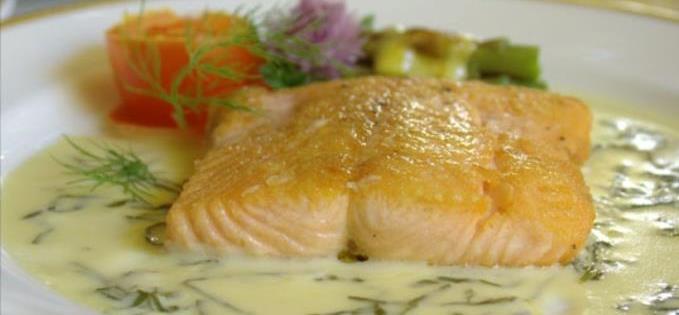 Fish course, Newport
Fish course, NewportSuch charm belies the architectural grandness of the place with its domed central hall and sweeping staircases. The dining room is particularly elegant – as is the classic food prepared by chef John Gavin. He has the advantage of a fertile walled kitchen garden dating back to 1720 and, of course, the hotel’s own salmon which, smoked at breakfast, was sublime. Beyond sublime at dinner was the chargrilled beef fillet, sourced from the town’s butcher’s, Kelly’s, which has a national reputation. Seared dark on the outside, meltingly tender inside, a candidate for the best beef we’ve ever eaten. It was accompanied perfectly by a Jean Luc Colombo Crozes Hermitage – Kieran’s cellar is phenomenal and the mark-ups gentle.
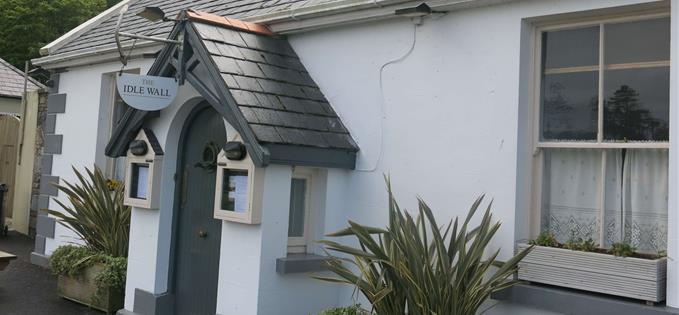 The Idle Wall, Westport foodie mecca, near Westport House, below
The Idle Wall, Westport foodie mecca, near Westport House, below

Journeying the 10 miles south to Westport. we also dined well at The Idle Wall, on the edge of Westport House estate. Here, in a tiny cottage, Aine Maguire sources great seafood and meat locally for her sophisticated take on Irish cuisine. Even vegetarians are treated with respect in starters such as salt roast golden beets, Gabhair Arann, wood sorrel, verjuice and a main of steamed potato dumplings, nettle butter, wild garlic, hazelnuts and Carrowholly cheese.
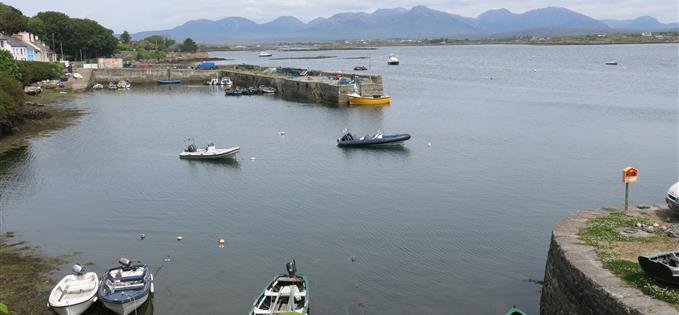 Roundstone, Connemara; below, mussels starter in O'Dowd's with local ale
Roundstone, Connemara; below, mussels starter in O'Dowd's with local ale
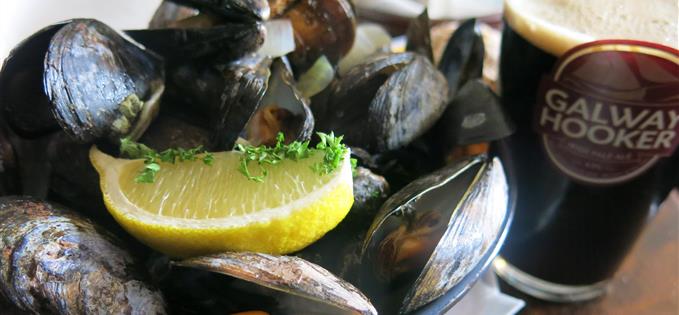
After Mayo we travelled ever southward, avoiding the N59 trunk road, through wild country around Louisburgh, Delphi and Killary Habour and into County Galway – coffee in Connemara capital Clifden, beachcombing at Ballyconneely with its almost Caribbean seas, smoked salmon at the nearby Connemara Smokehouse and a seafood platter lunch at O’Dowd’s bar in pretty Roundstone.
Our destination – Connemara Airport at Inverin, 15 miles north of Galway city, where we would take a small plane over to the Aran Islands. They are as wild as it gets along the Wild Atlantic Way.
Fact file
Neil Sowerby flew from Manchester to Dublin with Aer Lingus.
He hired a car from Hertz and Ireland’s greatly improved motorway network got him out to the west coast in just over two hours.
He stayed at Coopershill House, Riverstown, Co. Sligo. +353 71 916 5108, www.coopershill.com. Doubles from 200 euros a night including breakfast.
Newport House, Newport, Co Mayo. +353 98 41222, www.newporthouse.ie (from 95 euros B&B low season) and at Clare Island Lighthouse. +353 87 668 9758, www.clareislandlighthouse.com (minimum stay two nights, from 350 euros per person inc six course dinner) To get to the island he took the 20 minute ferry ride from Roonagh Quay (then 10 minutes uphill by four wheel drive). www.clareislandferry.com. Note the Lighthouse is shut in winter months, when it’s virtually impassible.
All three hotels are part of Ireland’s Blue Books, a collection of unique country houses, historic hotels, manor houses, castles and restaurants across the country. Look out for their special offers.
The Wild Atlantic Way is Ireland’s inspired branding of that entire coastal touring route. Tourism Ireland is making great play of the Way this year.
An essential printed companion is Where To Eat And Stay On The Wild Atlantic Way by respected Irish food and drink experts John and Sally McKenna (Estragon Press).
Another fine food resource is the Gourmet Greenway leaflet, covering Mayo’s artisan food producers and some good restaurants along the Great Western Greenway from Achill island, through Mulranny and Newport to Westport. At 42km, it's the longest off-road walking and cycling trail in Ireland, following the route of the famous Westport to Achill railway which closed in 1937. It crosses the river at Newport on a magnificent 19th century sandstone viaduct.
Ireland Ways organise walking and cycling holidays along extensive sections of the Wild Atlantic Way. For the next leg of our West of Ireland trip we booked with them on a self-guided trip to the Aran Islands.
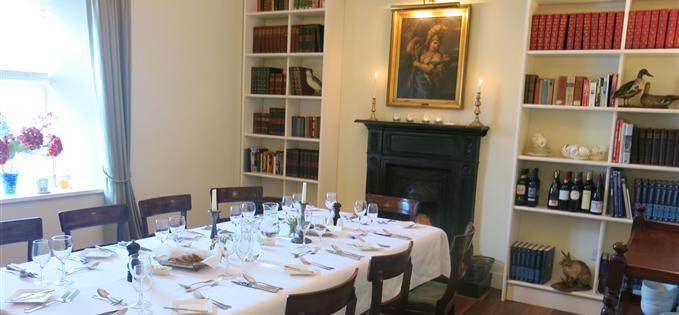 Dining room at the Lighthouse
Dining room at the Lighthouse
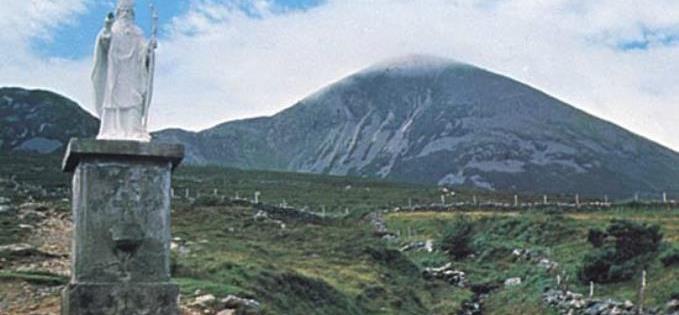 Croagh Patrick, the holy mountain
Croagh Patrick, the holy mountain
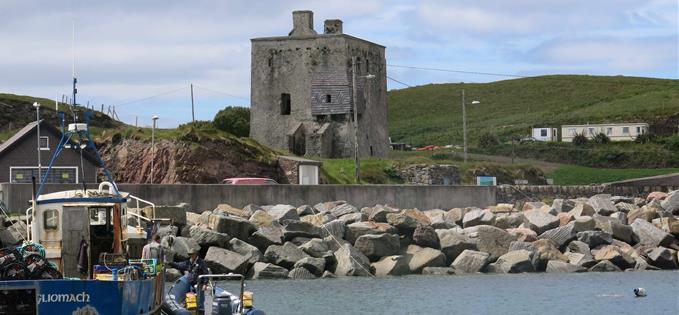 Grace O'Malley's Castle at Clare Island
Grace O'Malley's Castle at Clare Island 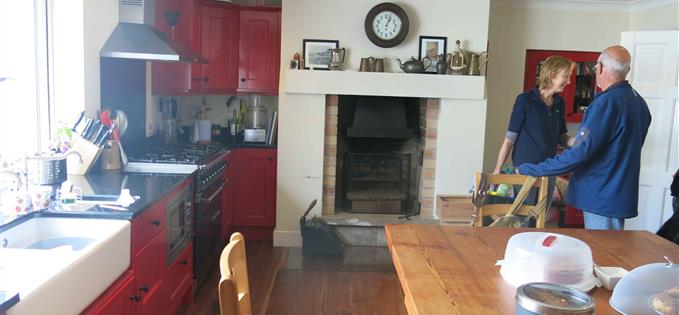 Communal kitchen at Clare Island Lighthouse; below, the dining room
Communal kitchen at Clare Island Lighthouse; below, the dining room

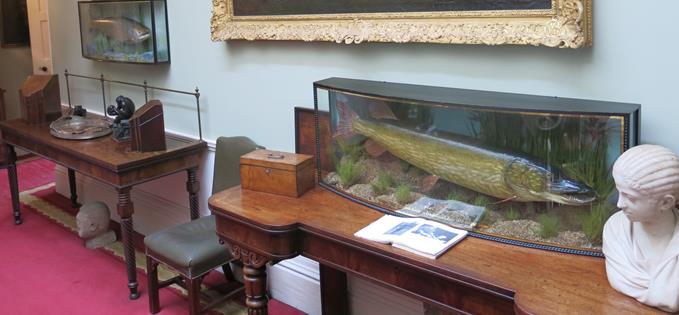 Newport House shows off its fishing trophies
Newport House shows off its fishing trophies
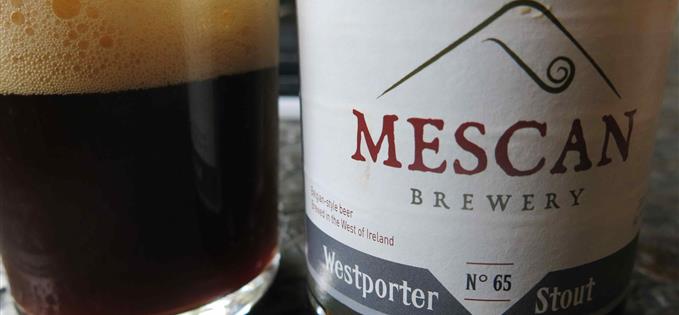 Local Westport beer
Local Westport beer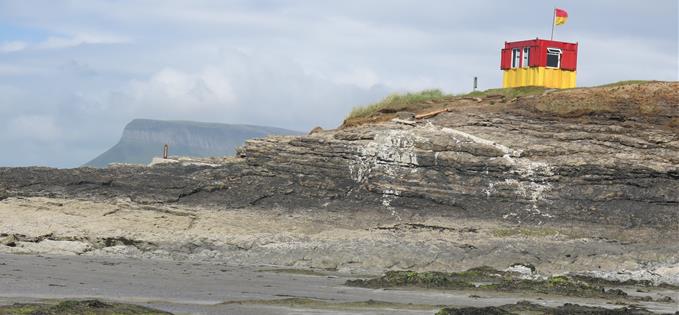 Rosses Point on the Sligo coast, Ben Bulben in the distance
Rosses Point on the Sligo coast, Ben Bulben in the distance










